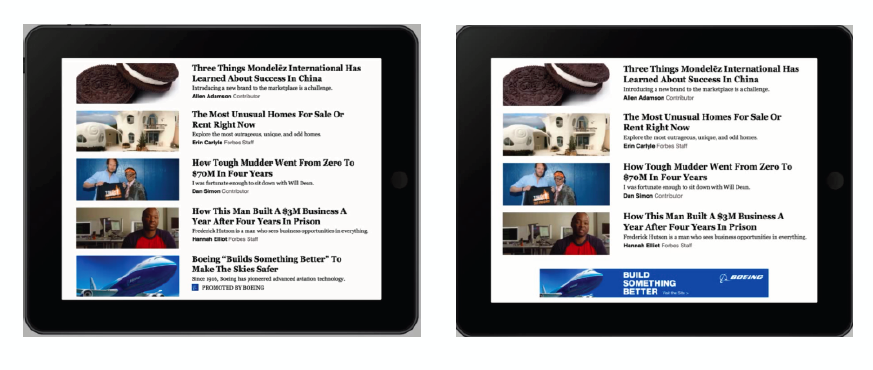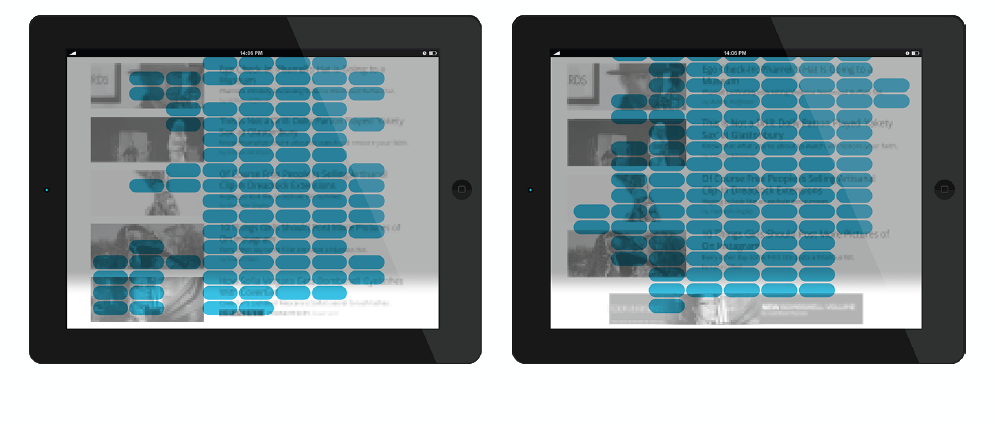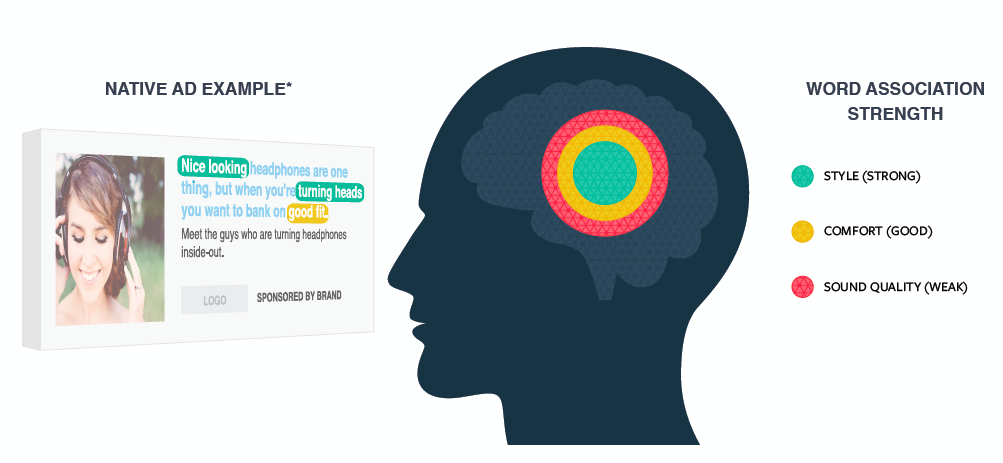Nielsen has hired the US-based software and advertising automation company Sharethrough to conduct the one-of-its-kind neuroscience study on how smartphone users visually process mobile ads. The study applied eye tracking and subconscious brand responses to two types of mobile advertisements: standard banners and sponsored stories referred to as native ads.
The study based on Nielsen’s EEG methodology was being conducted during almost a year since February 2014 through February 2015, and engaged five premium advertisers including Boeing. The research participants were shown a video simulating the scrolling experience where they could see editorial feeds with either native ads or banners crafted from the same creative elements and optimized for each format.

The findings from the Nielsen’s neuroscience study are, as follows:
1. Using the eye-tracking and neural brain tracking technologies, the Nielsen team calculated that native ads on mobile platforms generated 52% visual focus and engagement than banners. So it’s two times more effective in terms of visibility.
2. Banners are barely visible on mobile platforms. As all other types of images, banners are seen in the peripheral field of vision so that processing occurs much faster than textual processing. Thus, visual focus on banners is little or none.
3. Native ads are read just like other editorial articles with more focus on text and headline rather than thumbnails.

4. Native ad headines can be enhanced with positive words and right associations with the brand that result in a higher message resonance.

In contrast to these recent findings, an earlier study by Nielsen showed that overall mobile users were less receptive to ads—just 13% of users in the U.S. were willing to receive ads on their phone in exchange for services. At the same time, the study revealed that mobile ads could produce 45% rise in purchasing intent.
Dan Greenberg, Sharethrough CEO comments on the study:
“As the industry moves toward 100 percent viewability and mobile advertising continues to skyrocket, it’s important we understand what consumers actually ‘see’ when advertising appears on mobile sites.
What better way to understand what goes on in the consumer’s mind than neuroscience? The study proves that not only are consumers seeing native ads, they’re paying much more visual attention to them and in fact, reading their content. The findings also provide meaningful guidance on the art of constructing native ads, providing the industry with science-backed guidelines for how to best organize, display and write text for native ads.”
The full study with more findings, figures and infographics is available here.